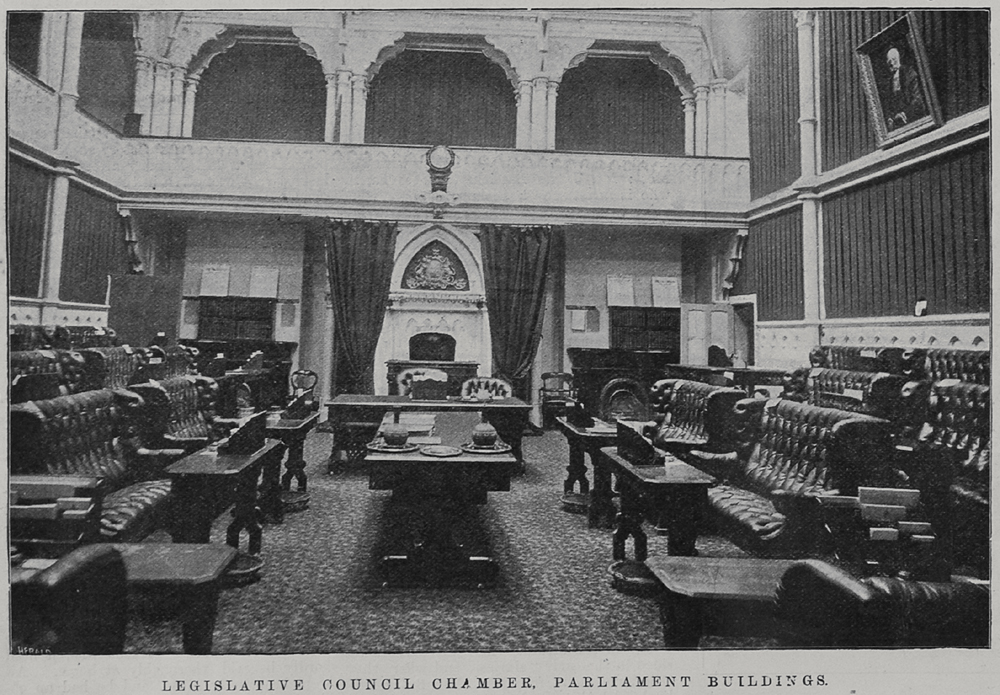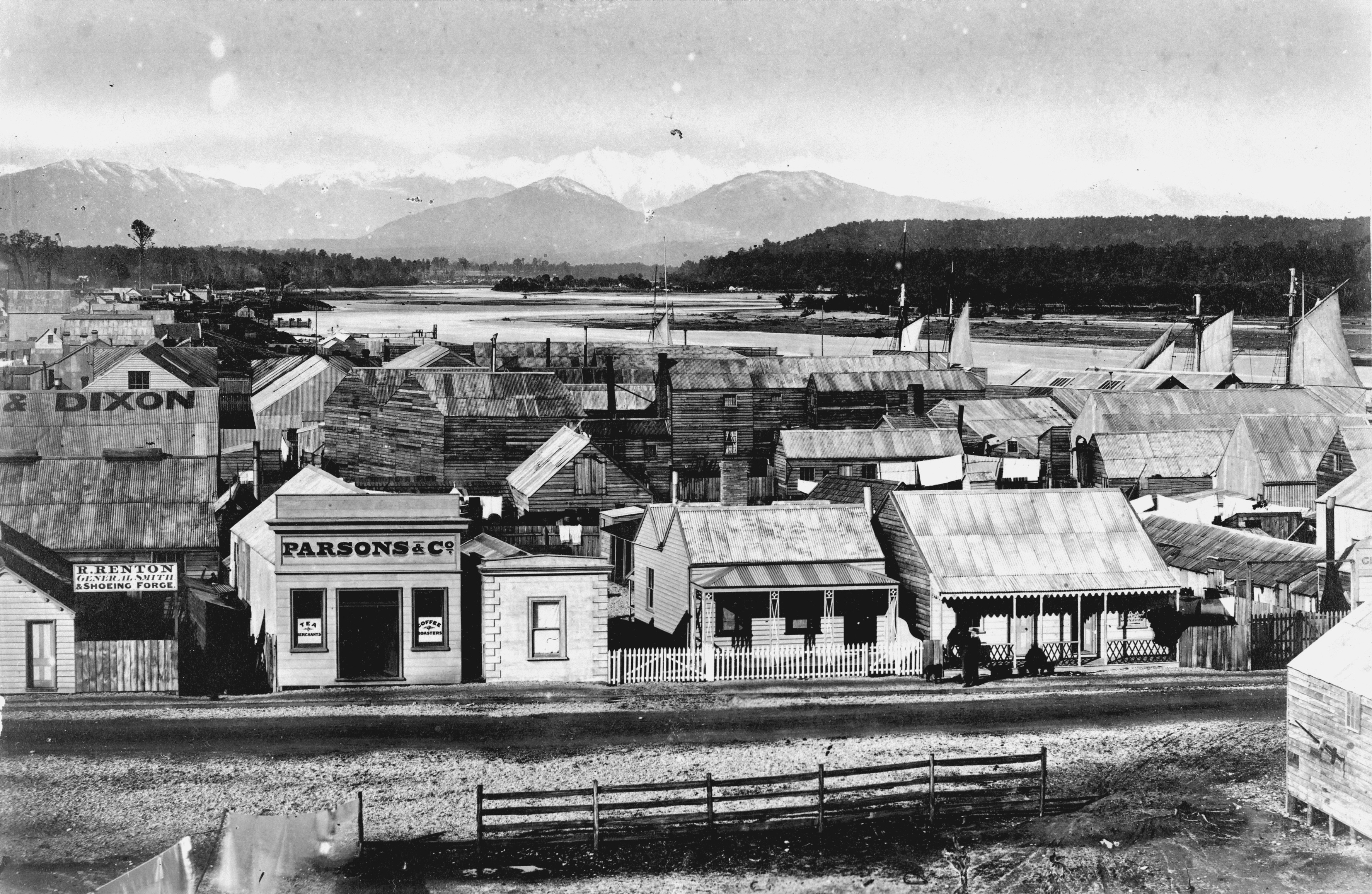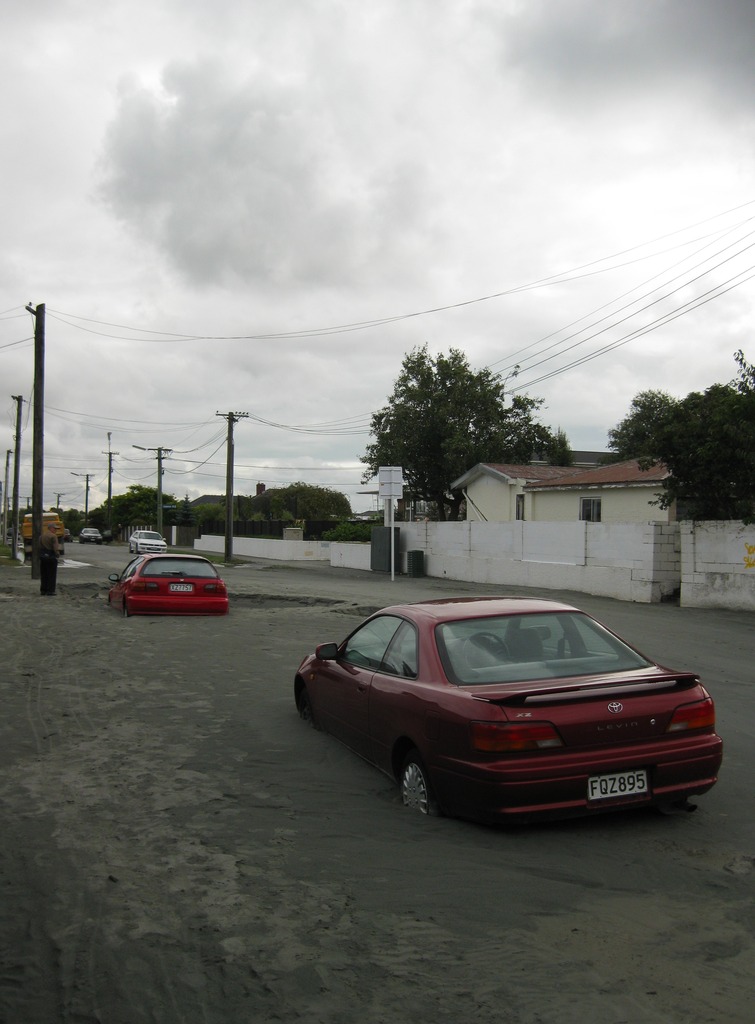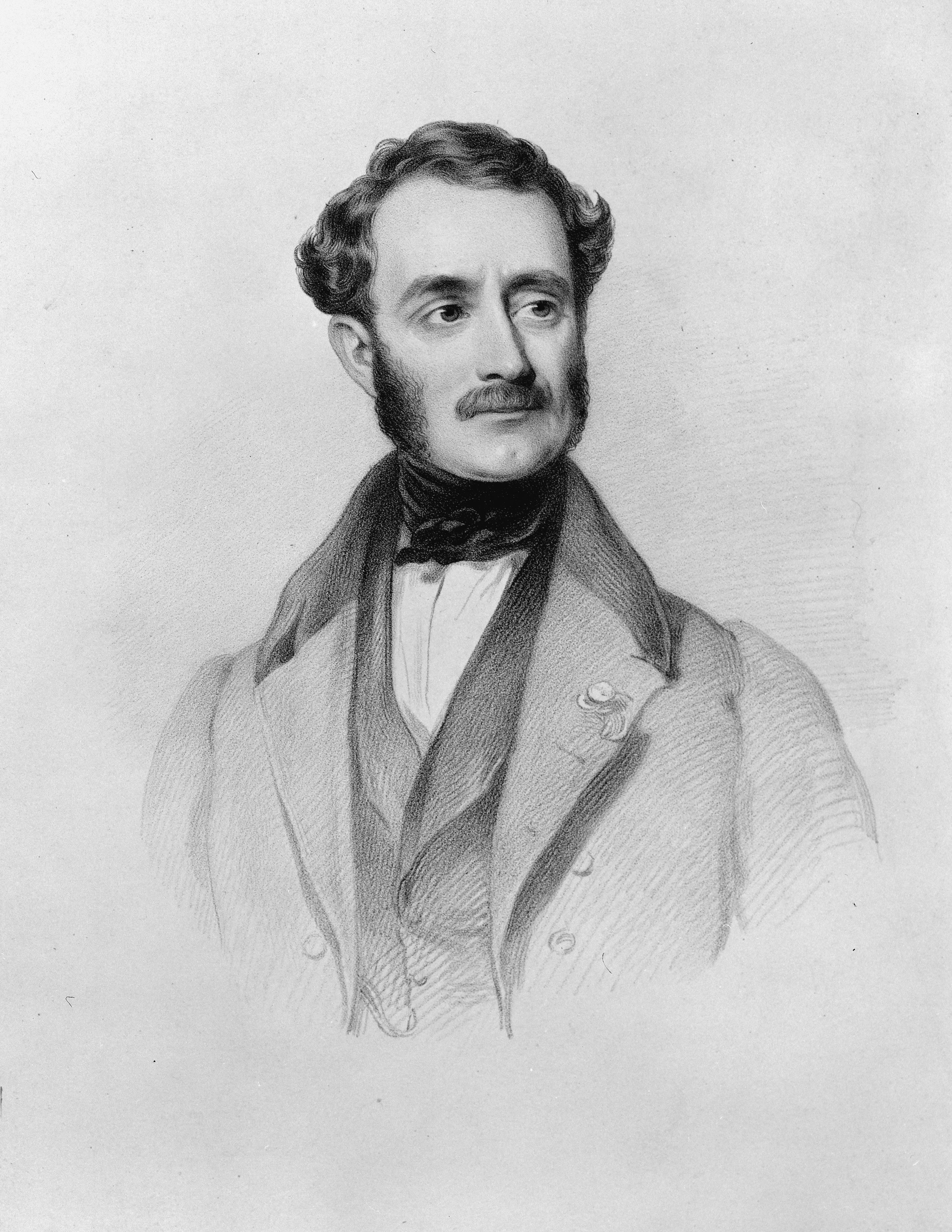|
Charles Louisson
Charles Melville Louisson (1840 – 19 April 1924), known as Charles Louisson or Chas Louisson, was a New Zealand politician. Born in London, and relocated to Australia as a teenager, he worked in farming and on the gold fields. He moved to Christchurch to join his brother Alfred (b. 1832) in business, which they conducted in transport, as merchants and farmers in various places in the South Island. Back in Christchurch, they were joined by their brother Cecil (b. 1837) and bought a brewery, which under their stewardship became very successful. With financial security behind him, Louisson first became a councillor for Christchurch City Council for six years (1881–1887) before being elected Mayor of Christchurch (1887–1889 and 1897–1899). In all of his two elections as councillor, and four elections as mayor, he was returned unopposed. Subsequently, to his retirement from the mayoralty, he was appointed to the Legislative Council (1900–1924). He held other public offices, ... [...More Info...] [...Related Items...] OR: [Wikipedia] [Google] [Baidu] |
New Zealand Legislative Council
The New Zealand Legislative Council was the upper house of the General Assembly of New Zealand between 1853 and 1951. An earlier arrangement of legislative councils for the colony and provinces existed from 1841 when New Zealand became a colony; it was reconstituted as the upper house of a bicameral legislature when New Zealand became self-governing in 1852, which came into effect in the following year. Unlike the elected lower house, the House of Representatives, the Legislative Council was wholly appointed by the governor-general. The New Zealand Constitution Act 1852 had authorised the appointment of a minimum of ten councillors. Beginning in the 1890s, the membership of the upper house became controlled by government of the day. As a result, the Legislative Council possessed little influence. While intended as a revising chamber, in practice, debates and votes typically simply replicated those in the lower house. It was abolished by an Act of Parliament in 1950, with ... [...More Info...] [...Related Items...] OR: [Wikipedia] [Google] [Baidu] |
Hokitika
Hokitika is a town in the West Coast region of New Zealand's South Island, south of Greymouth, and close to the mouth of the Hokitika River. It is the seat and largest town in the Westland District. The town's estimated population is as of . On a clear day Aoraki / Mount Cook can clearly be seen from Hokitika's main street. Toponymy The name Hokitika translates from Māori as "to return directly" (from , 'to return', and , 'direct'). According to the Ministry for Culture and Heritage, the name comes from when a band of Ngāi Tahu warriors in search of greenstone were about to attack Ngāti Wairangi . The chief of the invaders drowned while trying to cross the Hokitika River, and the leaderless (army) then returned directly to their own home. History The land where Hokitika stands was purchased in 1860 from Māori when Poutini Ngāi Tahu chiefs signed the Arahura Deed. This was the sale of the whole of the West Coast region, apart from small areas reserved for Māori ... [...More Info...] [...Related Items...] OR: [Wikipedia] [Google] [Baidu] |
Beth El Synagogue, Christchurch
The Beth El Synagogue in Christchurch, New Zealand, was located at 78 Gloucester Street. Two synagogues stood on the site, first a wooden one from 1864 and then a stone building from 1881 until its demolition in 1987. First synagogue A meeting of Jewish residents on 10 January 1864 held at the offices of Louis Edward Nathan, and chaired by Nathan, decided to form a congregation and to erect a synagogue. NZ£300 towards the cost of the building were subscribed during the meeting. By mid-year, the site at 78 Gloucester Street had been purchased. The architect, Benjamin Mountfort, called for tenders by 15 June 1864. It took until mid-August for the congregation to take possession of the land. Tenders for the fitout were called by Mountfort a week later. The congregation first used the building on 1 October 1864 to coincide with Rosh Hashanah, the Jewish New Year, for the year 5265. The building had cost NZ£500 but was not fully furnished; chairs were used for some time but seats had ... [...More Info...] [...Related Items...] OR: [Wikipedia] [Google] [Baidu] |
Justice Of The Peace
A justice of the peace (JP) is a judicial officer of a lower or ''puisne'' court, elected or appointed by means of a commission ( letters patent) to keep the peace. In past centuries the term commissioner of the peace was often used with the same meaning. Depending on the jurisdiction, such justices dispense summary justice or merely deal with local administrative applications in common law jurisdictions. Justices of the peace are appointed or elected from the citizens of the jurisdiction in which they serve, and are (or were) usually not required to have any formal legal education in order to qualify for the office. Some jurisdictions have varying forms of training for JPs. History In 1195, Richard I ("the Lionheart") of England and his Minister Hubert Walter commissioned certain knights to preserve the peace in unruly areas. They were responsible to the King in ensuring that the law was upheld and preserving the " King's peace". Therefore, they were known as "keepers of th ... [...More Info...] [...Related Items...] OR: [Wikipedia] [Google] [Baidu] |
The Star (Christchurch)
''The Star'' is a newspaper published in Christchurch, New Zealand. It was published daily from 1868 to 1991. It became the ''Christchurch Star-Sun'' in June 1935 after merging with a rival newspaper, ''The Sun'', and at the time it ceased daily publication in 1991 it was known as ''The Christchurch Star''. It later became a free newspaper, published twice a week (on Wednesdays and Fridays) until 2016, then once a week (on Thursdays) since 2016. History The ''Star'' was first published on 14 May 1868 as the evening edition of the ''Lyttelton Times''. In April 2013 the ''Star'' was sold by APN New Zealand Media (owners of ''The New Zealand Herald'') to Mainland Media. Mainland Media was owned by Pier and Charlotte Smulders, and chaired by Nick Smith, the director of the Dunedin–based media company Allied Press. Smith had previously worked as an advertising cadet for ''The Star'' in 1965. In August 2018, Allied Press acquired ''The Star'' owners Star Media and its s ... [...More Info...] [...Related Items...] OR: [Wikipedia] [Google] [Baidu] |
Christchurch Hospital
Christchurch Hospital is the largest tertiary hospital in the South Island of New Zealand. The public hospital is in the centre of Christchurch city, on the edge of Hagley Park, and serves the wider Canterbury region. The Canterbury District Health Board (CDHB) operates the hospital with funding from the government. Christchurch Hospital is the major trauma centre for northern and central Canterbury, and the tertiary major trauma centre for the wider Canterbury and West Coast regions. It has the busiest ED in the South Island and sees more major trauma than any other hospital in New Zealand, and all but a handful of hospitals in Australia. The Christchurch School of Medicine is on the hospital campus, the school provides teaching for fourth, fifth and sixth year medical students, and is part of the University of Otago. A new building, sitting behind the original Christchurch Hospital buildings, named ‘Waipapa’ was opened in 2020 and houses Canterbury DHB’s acute services. ... [...More Info...] [...Related Items...] OR: [Wikipedia] [Google] [Baidu] |
2011 Christchurch Earthquake
A major earthquake occurred in Christchurch on Tuesday 22 February 2011 at 12:51 p.m. local time (23:51 UTC, 21 February). The () earthquake struck the entire of the Canterbury region in the South Island, centred south-east of the central business district. It caused widespread damage across Christchurch, killing 185 people, in New Zealand's fifth-deadliest disaster. Christchurch's central city and eastern suburbs were badly affected, with damage to buildings and infrastructure already weakened by the magnitude 7.1 Canterbury earthquake of 4 September 2010 and its aftershocks. Significant liquefaction affected the eastern suburbs, producing around 400,000 tonnes of silt. The earthquake was felt across the South Island and parts of the lower and central North Island. While the initial quake only lasted for approximately 10 seconds, the damage was severe because of the location and shallowness of the earthquake's focus in relation to Christchurch as well as ... [...More Info...] [...Related Items...] OR: [Wikipedia] [Google] [Baidu] |
Christchurch Central City
Christchurch Central City or Christchurch City Centre is the geographical centre and the heart of Christchurch, New Zealand. It is defined as the area within the Four Avenues (Bealey Avenue, Fitzgerald Avenue, Moorhouse Avenue and Deans Avenue) and thus includes the densely built up central city, some less dense surrounding areas of residential, educational and industrial usage, and green space including Hagley Park, the Christchurch Botanic Gardens and the Barbadoes Street Cemetery. It suffered heavy damage in the 2010 Canterbury earthquake and was devastated in the 2011 Christchurch earthquake. Following this second earthquake, the Central City Red Zone The Central City Red Zone, also known as the CBD Red Zone, was a public exclusion zone in the Christchurch Central City implemented after the 22 February 2011 Christchurch earthquake. After February 2013, it was officially renamed the CBD Rebuil ... was set up and, with a gradually shrinking area, remained inaccessible ... [...More Info...] [...Related Items...] OR: [Wikipedia] [Google] [Baidu] |
Christchurch City Libraries
Christchurch City Libraries is operated by the Christchurch City Council and is a network of 21 libraries and a mobile book bus. Following the 2011 Christchurch earthquake the previous Christchurch Central Library building was demolished, and was replaced by a new central library building in Cathedral Square, ''Tūranga'', which opened in 2018. Early history The library began as the Mechanics' Institute in 1859, when 100 subscribers leased temporary premises in the then Town Hall. The collection consisted of a few hundred books. By 1863, with the help of a grant from the Provincial Government, the Mechanics' Institute opened a building on a half-acre of freehold land on the corner of Cambridge Terrace and Hereford Street, purchased the year before at a cost of £262.10.0. This site was to remain the home of the library until 1982. Debt, dwindling subscribers and other problems forced the institute to hand over the building to the Provincial Government in 1873. By this time t ... [...More Info...] [...Related Items...] OR: [Wikipedia] [Google] [Baidu] |
Bottling Store, Crown Brewery
Bottling lines are production lines that fill a product, generally a beverage, into bottles on a large scale. Many prepared foods are also bottled, such as sauces, syrups, marinades, oils and vinegars. Beer bottling process Packaging of bottled beer typically involves drawing the product from a holding tank and filling it into bottles in a filling machine (''filler''), which are then capped, labeled and packed into cases or cartons. Many smaller breweries send their bulk beer to large facilities for contract bottling—though some will bottle by hand. Virtually all beer bottles are glass. The first step in bottling beer is ''depalletising'', where the empty bottles are removed from the original pallet packaging delivered from the manufacturer, so that individual bottles may be handled. The bottles may then be rinsed with filtered water or air, and may have carbon dioxide injected into them in attempt to reduce the level of oxygen within the bottle. The bottle then enters a "fil ... [...More Info...] [...Related Items...] OR: [Wikipedia] [Google] [Baidu] |
Southbridge, New Zealand
Southbridge is a small town on the Canterbury Plains in the South Island of New Zealand. It is located southwest of Christchurch, between Leeston, Dunsandel and the Rakaia River. The town serves mainly as a centre for agricultural services, but also has nearly 70 small to medium-sized businesses, a swimming pool, tennis courts, Southbridge Primary School, and many other attractions. On 13 July 1875, a branch line railway was opened from Christchurch to Southbridge. Despite proposals to extend it further to Longbeach, New Zealand, Longbeach and Waterton, New Zealand, Waterton, the line's terminus remained in Southbridge and it was thus known as the Southbridge Branch (New Zealand), Southbridge Branch. Traffic was strong in the line's early decades; in 1914, two mixed trains and a goods-only train ran each way daily. However, the line entered into decline after the late 1920s. Passenger services to Southbridge were cancelled on 14 April 1951, and the line closed entirely on 3 ... [...More Info...] [...Related Items...] OR: [Wikipedia] [Google] [Baidu] |
Marlborough Region
Marlborough District or the Marlborough Region (, or ''Tauihu''), commonly known simply as Marlborough, is one of the 16 regions of New Zealand, located on the northeast of the South Island. Marlborough is a unitary authority, both a district and a region. Marlborough District Council is based at Blenheim, the largest town. The unitary region has a population of . Marlborough is known for its dry climate, the Marlborough Sounds, and Sauvignon blanc wine. It takes its name from the earlier Marlborough Province, which was named after General The 1st Duke of Marlborough, an English general and statesman. Geography Marlborough's geography can be roughly divided into four sections. The south and west sections are mountainous, particularly the southern section, which rises to the peaks of the Kaikōura Ranges. These two mountainous regions are the final northern vestiges of the ranges that make up the Southern Alps, although that name is rarely applied to mountains this far no ... [...More Info...] [...Related Items...] OR: [Wikipedia] [Google] [Baidu] |







